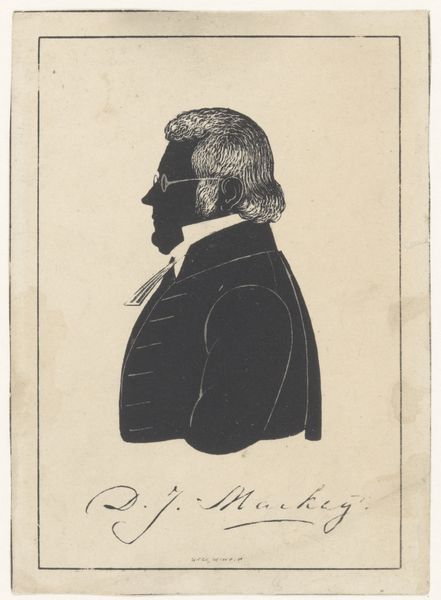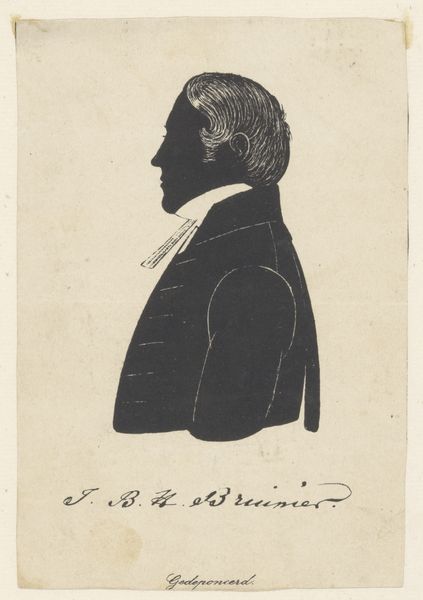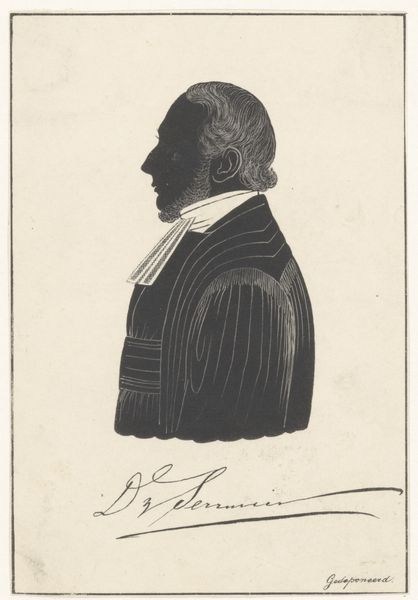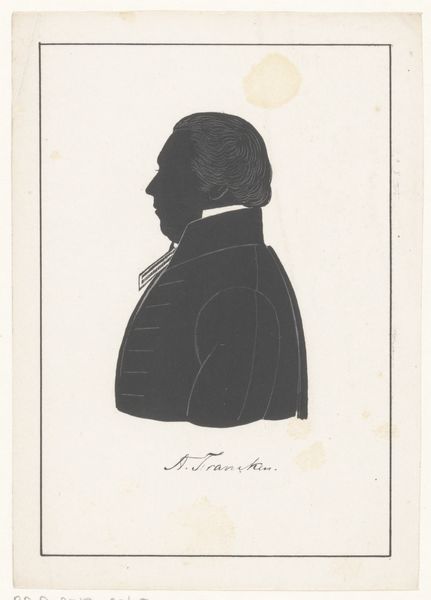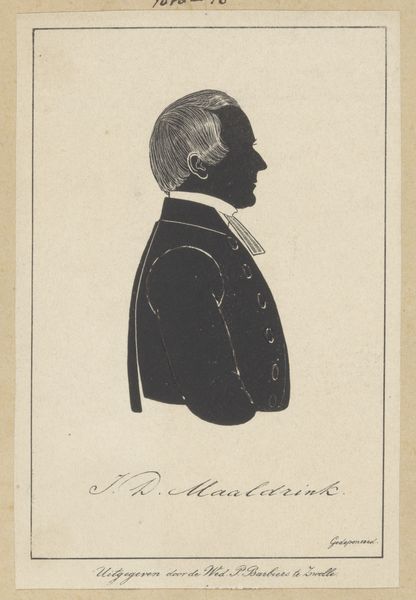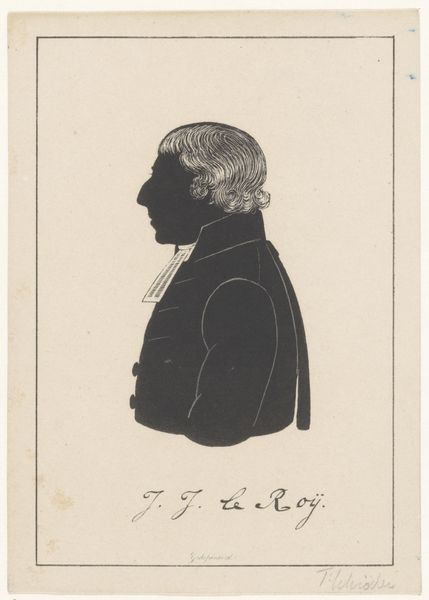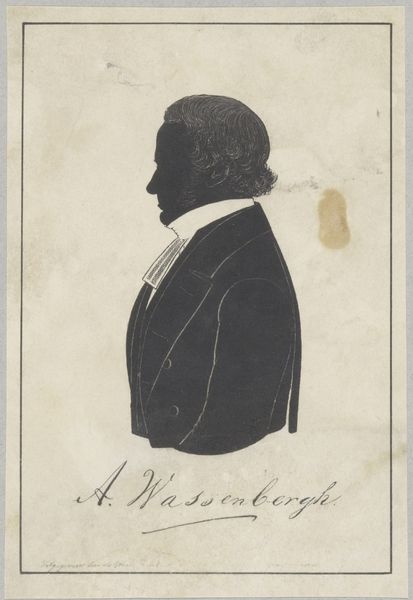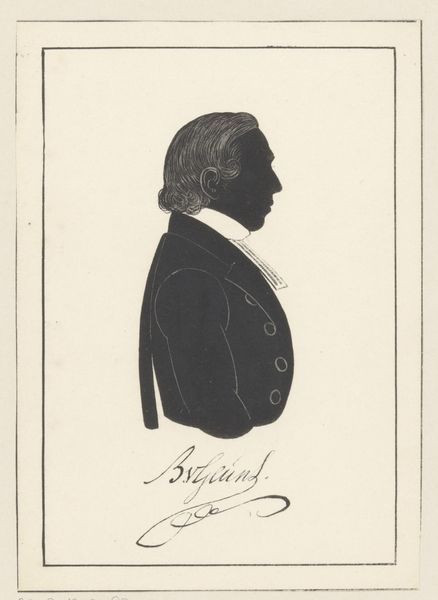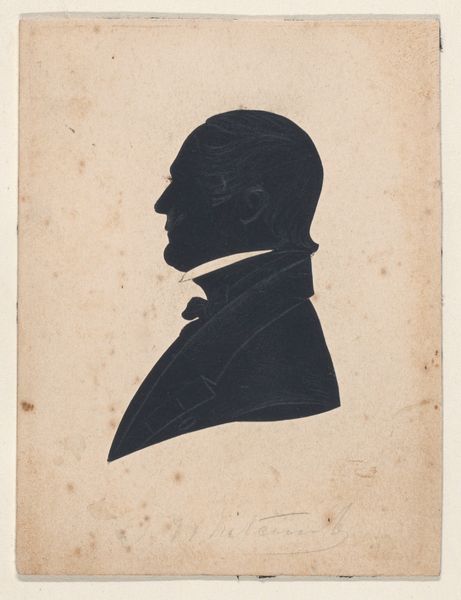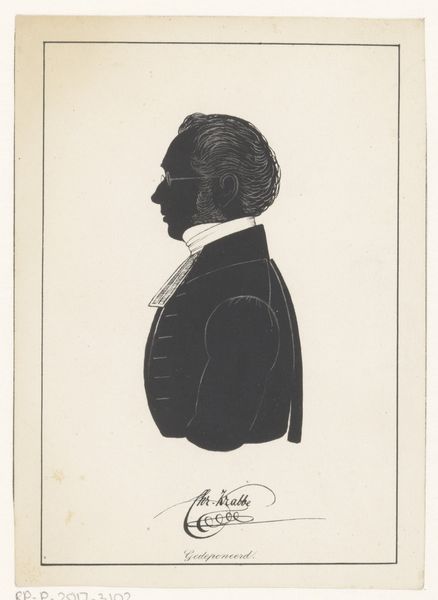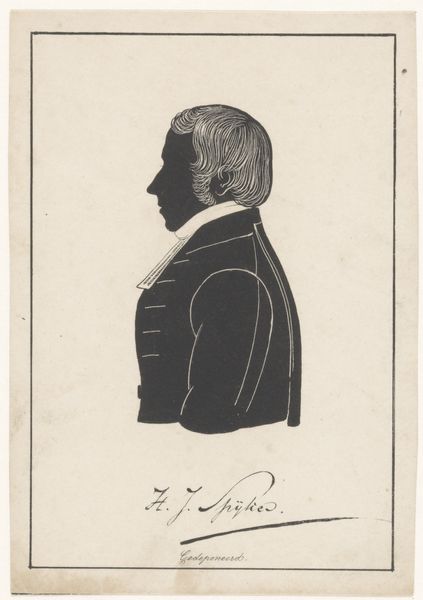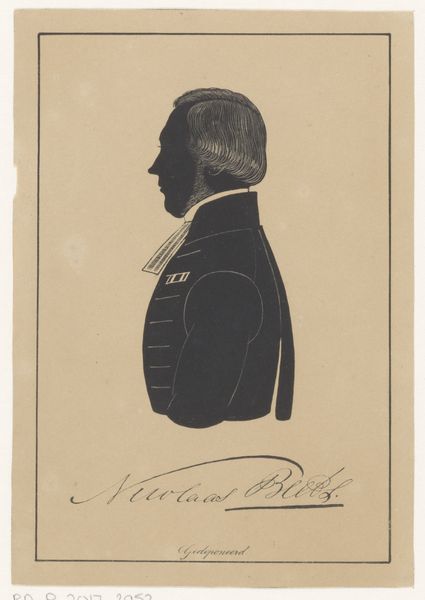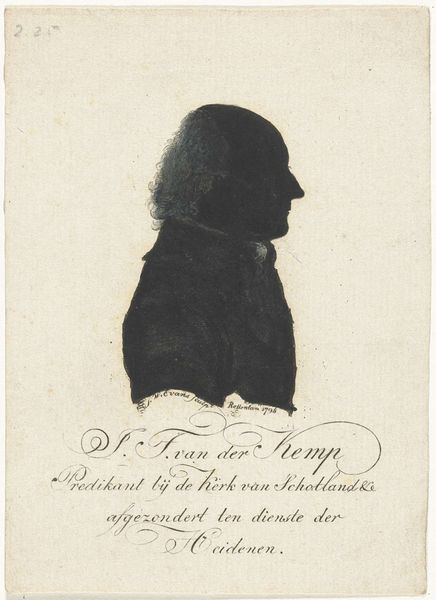
drawing, ink
#
portrait
#
drawing
#
ink
#
romanticism
Dimensions: height 149 mm, width 113 mm
Copyright: Rijks Museum: Open Domain
Editor: Here we have Pieter Barbiers' "Silhouette Portrait of Daniël Johannes Mackay," made sometime between 1809 and 1848. It's a simple ink drawing, but there's something striking about the clean lines of the silhouette. What strikes you about this piece? Curator: For me, the interest lies in the material process itself. A silhouette is, by definition, a process of reduction, boiling down identity to an outline. It speaks volumes about the materials available and the economic circumstances that might lead someone to choose such a method of portraiture. Editor: So you see it as a kind of resourceful or economic choice of the artist? Curator: Precisely. Ink was more accessible than painting, and the skill to create a likeness resided not just in artistic training, but in the precision of hand and eye, almost a craft. We should also consider the social implications; portraits democratized through less expensive mediums meant a wider circle of society could participate in image-making and memorialization. How do you view the impact of the production technique here? Editor: I hadn’t really thought about it that way. It's fascinating how a choice of medium can reshape access and perception, from something like painting to something almost like stenciling. Curator: Exactly! It makes one question what’s valued—the skill of the hand or the availability of the product to the masses? It collapses high art ideals of individual genius and skill. What do you make of the implications about who gets represented and remembered through artistic creation? Editor: I guess that makes me rethink silhouettes and their role, how the material informs not just the appearance, but the entire social story around it. It’s definitely much more than just a picture. Curator: Indeed, looking through a materialist lens brings new dimensions to understanding and valuing the work, placing the focus back on the labour of creating art, and not solely on aesthetics or status.
Comments
No comments
Be the first to comment and join the conversation on the ultimate creative platform.
